The 40 Inventive Principles is a classical TRIZ tool used for creative thinking, problem-solving, and generating new ideas. It was developed by Genrich Altshuller based on the analysis, classification, and systematization of tens of thousands of patents.
This help article provides step-by-step instructions on how problem solvers can effectively use the 40 Inventive Principles as a creative thinking tool to generate new ideas and solutions.
Concept
The approach is based on two fundamental concepts:
- Any problem can be represented as an engineering contradiction: taking any action results in the improvement of some parameter while worsening another parameter.
- To solve a problem means to remove the engineering contradiction that represents the problem.
Glossary & Definitions
Contradiction
An engineering contradiction is a situation, in which an attempt to improve one parameter of an engineering system leads to the worsening of another parameter
Parameter
An engineering parameter is a generalized characteristic representing an engineering situation.
A technical contradiction is defined as an opposition between these parameters.
Principle
Principles are a list of known generic solutions. Studying these existing solutions can inspire you to solve new problems and imagine innovative solutions.
Using Inventive Principles
In this article, we will not dig too much into the “why” to use Inventive Principles, when is it useful and what are the use cases. For that, we have several blog articles that we welcome you to read. Here, we will concentrate on the step-by-step instructions and mechanism of how to use the tool.
First, we assume that you already know how to start using a new tool. For more information about that visit Creative Tools article. Inventive Principles is one of the available tools in the PRIZ Innovation Platform.
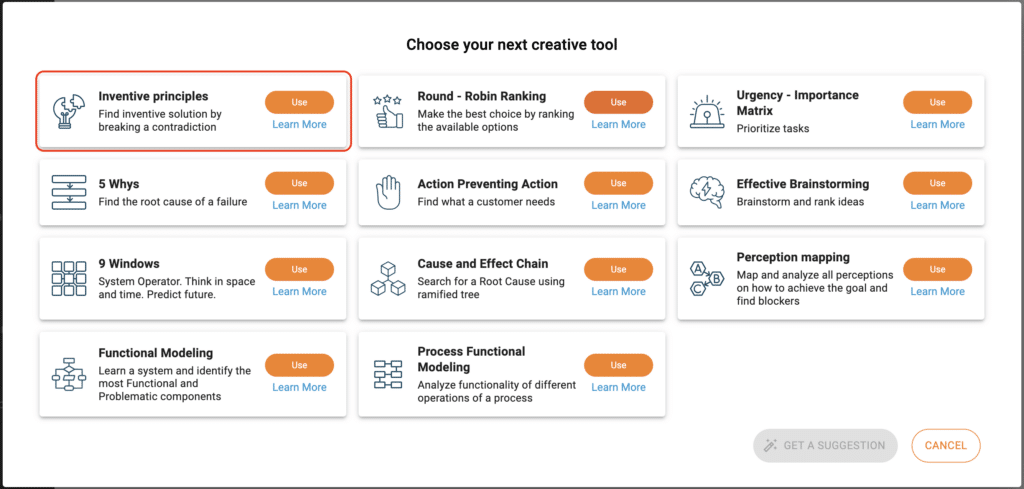
Quick reminder: The 40 Inventive Principles tool is designed to resolve contradictions. When a contradiction is resolved without compromises, the idea can be considered inventive. It is much easier to identify an engineering contradiction once you have an idea in mind. The idea can be as unconventional or unachievable as you like. The purpose of identifying a contradiction is to highlight why something is not possible or suboptimal. Resolving the contradiction makes it possible.
After selecting the tool from the list, you will be redirected to a page with where you are required to record that controversial idea that we mentioned above.
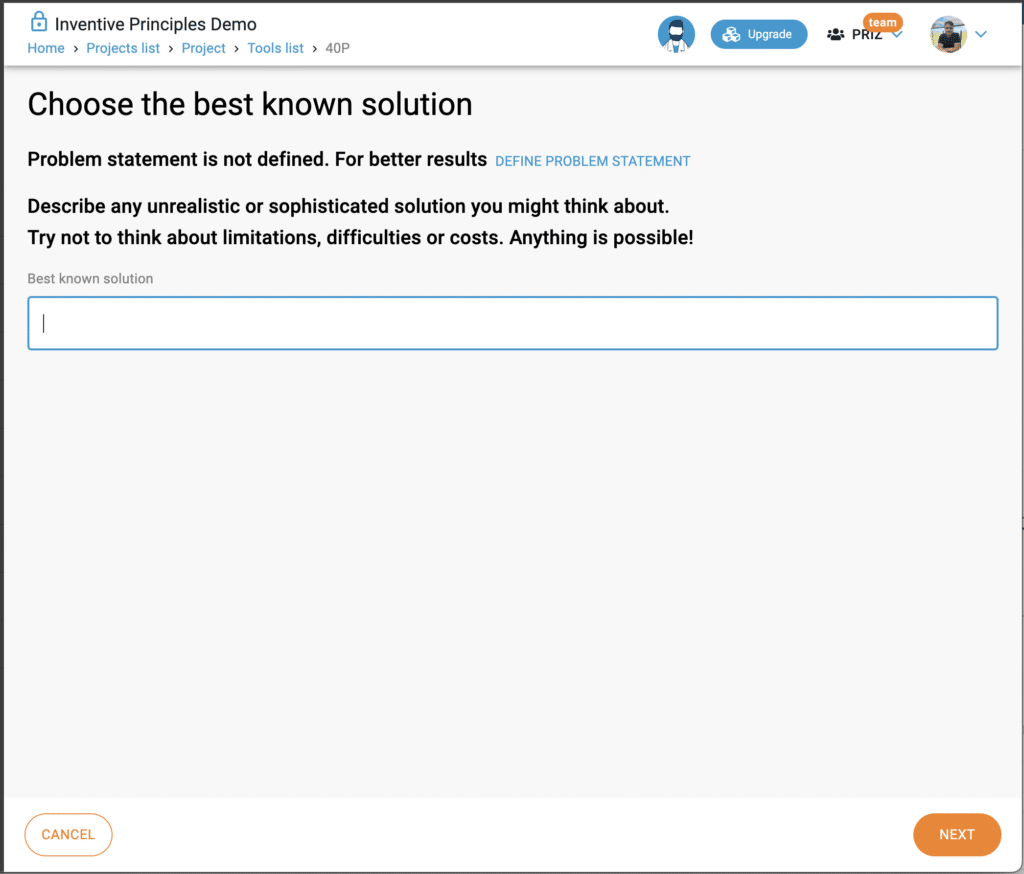
Once you provide the “best known solution”, you can finally create the instance of the tool by clicking “NEXT”. A this point you’ll be presented with 4 steps process.
Inventive Principles Process
There is a well-defined process for using Inventive Principles, consisting of the following steps.
- Engineering contradiction
- Improving parameter
- Worsening parameter
- Principles & solutions
The listed steps must be performed in order, with each step completed before moving on to the next one.
Building Engineering Contradiction
In this phase, we have to define the engineering contradiction. An engineering contradiction is a situation, in which an attempt to improve one parameter of an engineering system leads to the worsening of another parameter. This is when the “Best known solution”, which we defined previously becomes very useful. To further assist us, the system provides a specific template that we can use to define the contradiction. It has the following structure:
IF we do something,
THEN some parameter will improve,
BUT some other parameter will become worse.
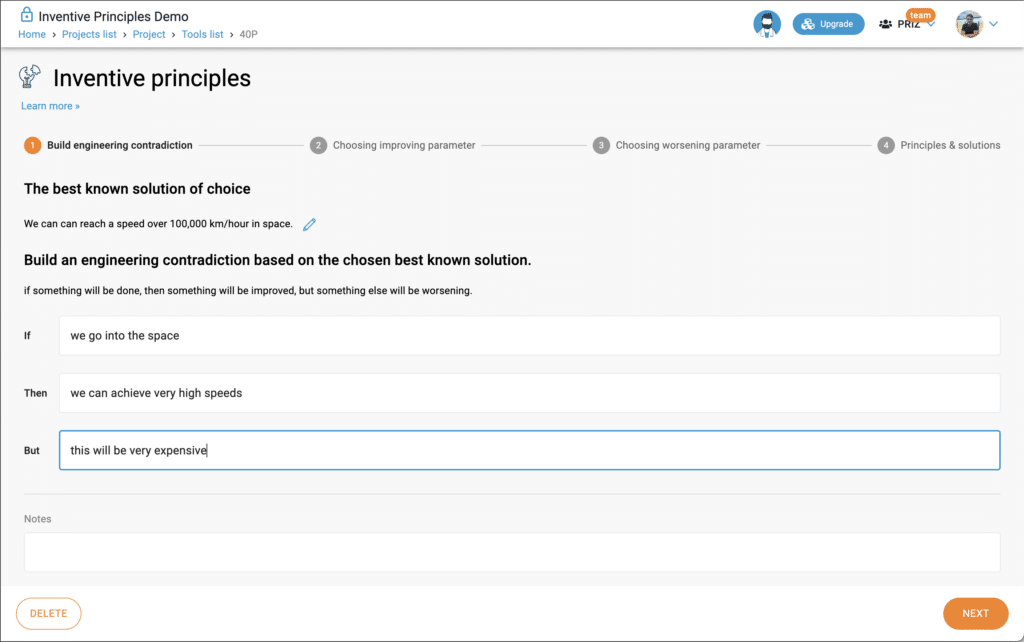
Now, we are ready to move to the next step.
Choosing Improving Parameter
At this stage of the process, we need to select the general improving parameter. This corresponds to the “THEN” part of the engineering contradiction identified in the first step.
Here, we would like you to provide a description, in your own words, of the parameter that will be improved as a result of the change. Describing the parameter is important because it prompts us to reconsider its meaning, making it easier for us to select the most suitable parameter from the list of 39 general parameters.
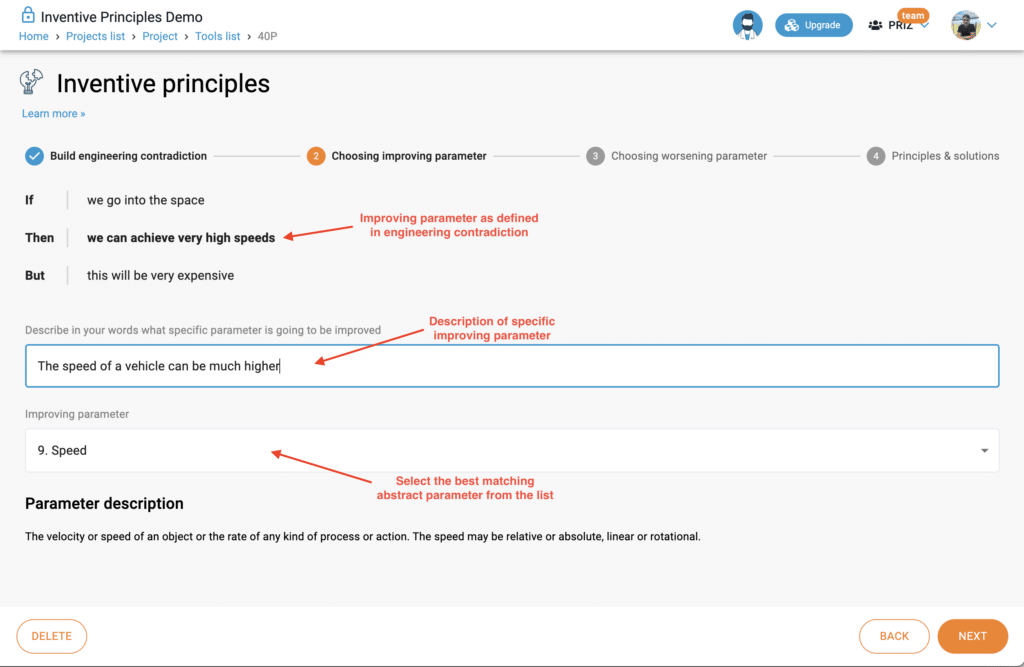
Don’t worry about being precise; you can always go back and make changes. In fact, it is encouraged to try a few different parameters.
Choosing Worsening Parameter
Similar to the previous step, we need to select the most suitable generic parameter that matches the criteria. However, in this case, we are specifically considering the opposite side of the engineering contradiction – the worsening parameter.
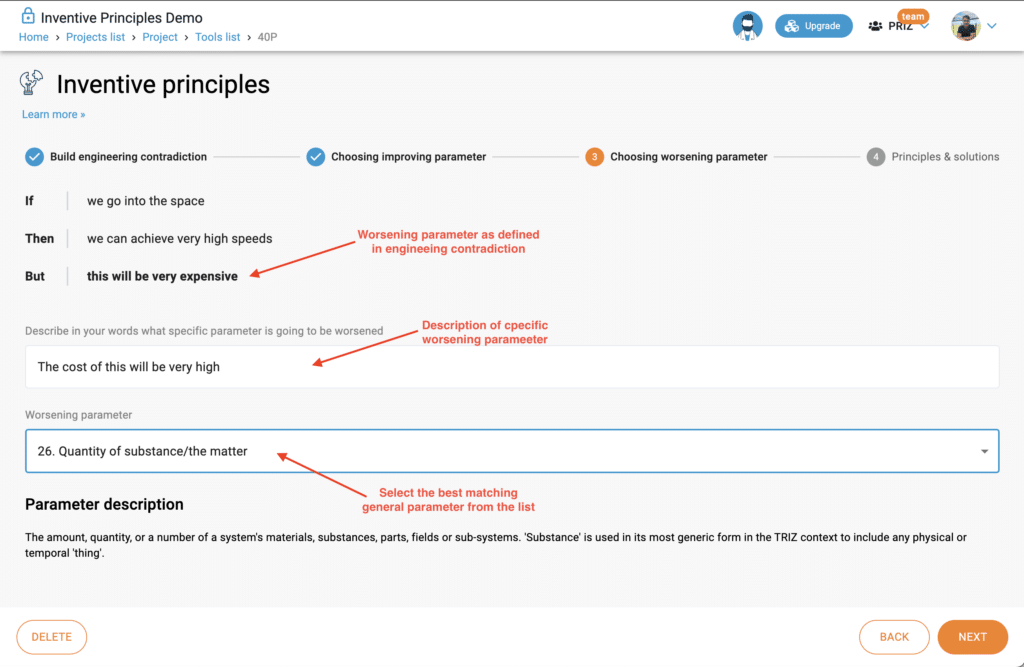
Same here, don’t worry about being precise. On the contrary, play around with different parameters and see what results they provide.
We have now selected both types of parameters and are ready for the next phase.
Prinsiples & Solutions
This is the last, but the most important phase of phase in the 40 Inventive Principles process. This is when we generate the ideas of how the contradiction will potentially be solved. On this tab, the tool will present a few principles based on the parameters we selected previously.
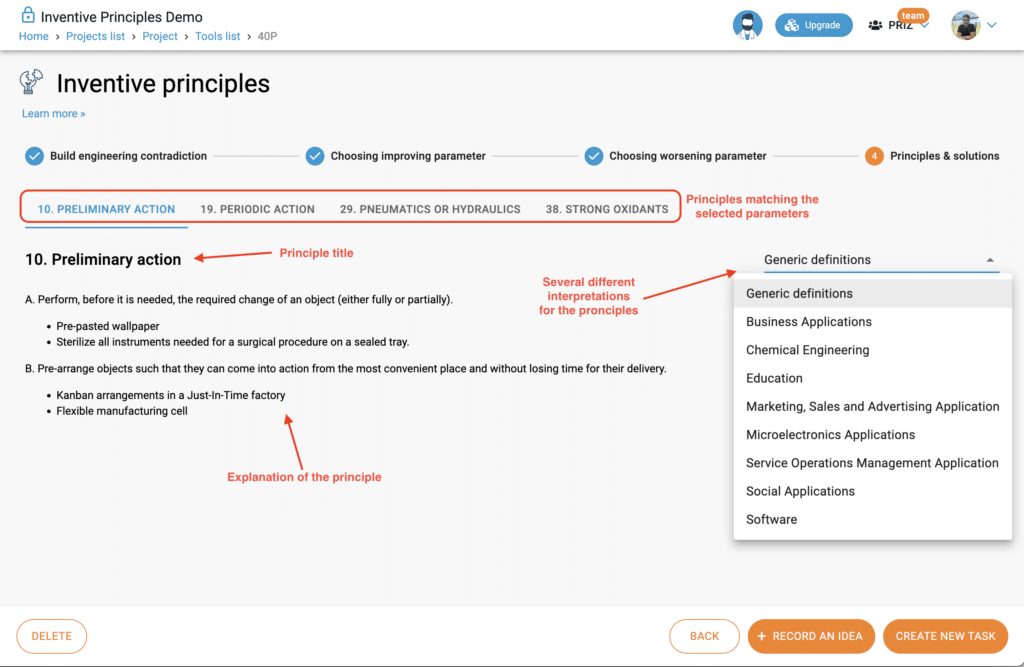
The principle is essentially a proposed solution to the contradiction we are addressing. It serves as a generic concept for a solution. In simple terms, we need to answer the question: how can we apply this generic principle to our specific use case?
Collaborative discussions and generating ideas as a group can be highly beneficial in many instances.
A few notes:
- The order of principles is important. Statistically, the first principle presented is more likely to yield better results.
- In cases where the platform does not suggest any specific principles, it will present the first 10 statistically significant ones. Begin with the first one presented.